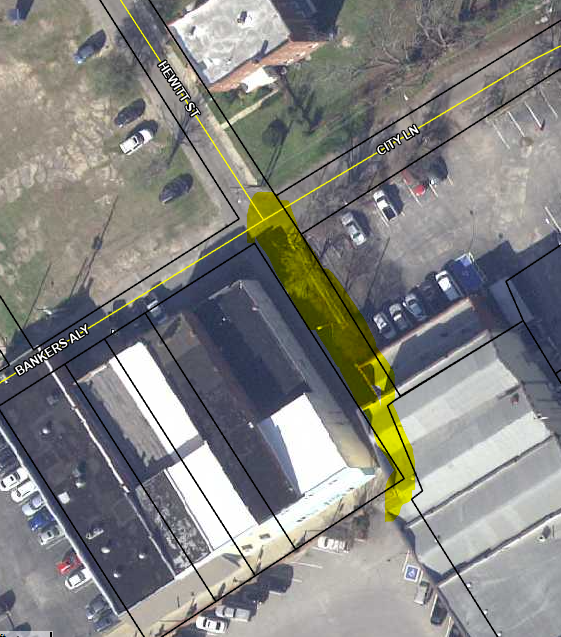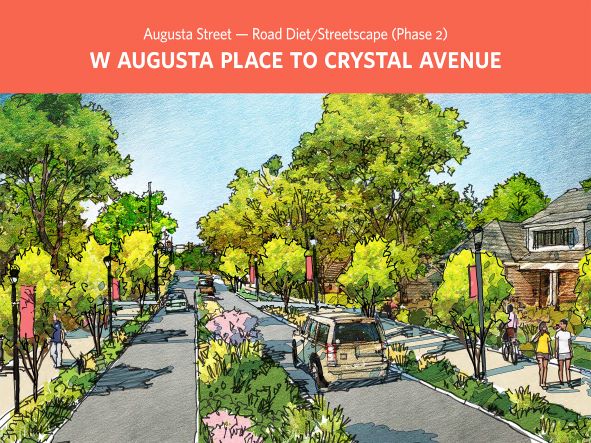
Municipalities across South Carolina are prioritizing streetscapes and ease of pedestrian travel to optimize safety, economic development and community pride. From cyclist paths to streamlining foot traffic to expanding accessibility, streetscapes and beautification projects are underway, transforming the way residents interact with downtowns.
Focusing on these goals, the City of Greenville has pursued improvement projects along two of the city’s major thoroughfares: Augusta Street and Stone Avenue.
“Augusta Street is one of our major commercial corridors in the city,” said Clint Link, director of engineering services for Greenville. “It does have a fairly long history of the need for traffic safety and pedestrian safety improvements.”
A pedestrian fatality in 2021 reenergized the city’s commitment to improving safety along this major corridor. It sought consultants to perform a road safety audit, a detailed traffic capacity analysis and an urban design analysis. By the end of 2021, the city had a completed assessment that gave a variety of project recommendations, including widening and fixing sidewalks, adding crosswalks and pedestrian traffic signal enhancements, and lighting improvements.
A multidisciplinary study team with representatives from Greenville County, the police and fire departments, Greenlink Transit, the city’s planning and zoning department, traffic engineering and the SC Department of Transportation weighed in. The ultimate conclusion was that a road diet — a reduction of lanes to create room for safety enhancements — could work for a portion of the road.
Link described the “extensive public involvement” that went into planning, including three public meetings over a six-month period while the engineering analysis study took place. At a final public meeting, the planning commission presented the analysis, and city council supported proceeding with the road diet.
Following the completion of the initial Augusta Street road diet, which slowed traffic and received positive reviews, the city has turned its attention to a second phase, expanding the road diet and implementing recommendations from the pedestrian safety plan. Improvements are coming soon to nearby Stone Avenue, which has similar traffic volumes.
“We’ve got a really good model for how we handled Augusta Street,” Link said. “We’re generally following that same model for Stone Avenue.”
Phase 2 of the Augusta Street road diet and streetscape project is now underway and has another year of engineering, design, and analysis left to do. The Stone Avenue project is off the ground with an estimated nine-month turnaround time.
In the City of Darlington, plans for a streetscape improvement project are coalescing on the heels of $750,000 worth of funding from the Community Development Block Grant and a $75,000 match from Darlington County.

“We have a walking trail, two parking lots that will be repaired, and a placemaking effort that will occur in an alley that is unused. Our hope is to create a place there that will encourage a sense of civic engagement, so that you would actually go to the place — not just walk through it to get from one part to the other — but [see it as] a place where people would want to hang out,” said Merry Morgan Smith, Darlington’s economic development and planning director.
The city was grateful for the match provided by the county, Smith said.
“The return will be exponential as far as our visual environment will go a long way to reshaping the downtown, so we’re super excited about that,” Smith said, adding that some property owners have begun tidying up in anticipation of the project.
The project will include parking area refurbishments, green space, and a walking trail.
“We’re really excited that we’re going to be able to take this alleyway [Hewitt Alley] that nobody uses at the moment and turn it into possibly our most valuable public asset,” Smith said.
Hewitt Alley connects to the Darlington County Historical Commission and Museum, as well as the new county courthouse, now under construction. Other beautification projects are also underway.
“Our code calls for trees for every certain number of parking spaces, and so we’ll incorporate those into our [refurbished] parking lots,” Smith said.
Darlington has been named a Tree City USA for 25 years, and takes pride in its tree canopy and looks to incorporate trees into its placemaking, Smith said, adding that the project aims to improve the city for the benefit of its entrepreneurs.
“I think that this project will help with Darlington’s sense of local identity and culture and give back some civic pride,” she said. "That in turn, will spur development here.”
Over in Laurens County, the City of Laurens is ramping up its beautification and development initiatives.
“It’s sort of a product of a variety of different initiatives,” said Mayor Nathan Senn, alluding to the new pedestrian plaza that recently held its grand opening, as well as the beautification and streetscaping projects underway.
Streetscaping improvements were outlined as far back as the city’s 2017 Master Plan. In cooperation with the Main Street Laurens program, the city got to work. On the recommendation of the U.S. Forestry Commission, the city replaced the older, expiring Japanese zelkova trees with beds for new street trees.

“We also have done a number of community surveys as part of our comprehensive plan process, and one of the things that we’ve consistently heard from residents is that we need more connectivity and more [Americans with Disabilities Act] accessibility,” said Senn.
The initiatives received support from the American Rescue Plan funds the city received. With the closure of the city’s restaurants in response to the COVID-19 pandemic, Senn said that there was nowhere to accommodate diners because of the barrenness of its sidewalks. The plan for a public plaza allowed the city to help its existing restaurants and coffee shop by giving them a shared outdoor dining space, he said.
Yet another initiative is the Connect Laurens program, according to City Administrator Eric Delgado.
“The new sidewalks are kind of aged out, and the eastern and western sides of Laurens are really underdeveloped with connectivity infrastructure,” Delgado said, noting that the project will be realized in phases.
The city is also actively upgrading its sidewalks to increase ADA accessibility. These implementations will allow greater downtown access for non-driving residents, elderly residents, and residents overcoming mobility challenges. And that’s not all — while renovating the pedestrian plaza, bricks over a century old were uncovered in pristine condition.
“When we uncovered about 4 inches of asphalt which had been laid over the years, the bricks underneath were in very, very good shape,” said Senn.
These vitrified bricks dating to 1908 survived the test of time, and at a special-called city council meeting, the council decided to move forward with the financing to unearth these historic bricks.
“[This] was really exciting because it would bring our streets back to their appearance in 1908 and that would match the county’s $5.1 million restoration of our historic courthouse, which is going to be taking that building back to [its] 1911 appearance,” Senn said.
As cities across South Carolina continue to prioritize streetscapes and walkability, communities are continuing to experience great civic engagement, community pride, and economic development as a result.
